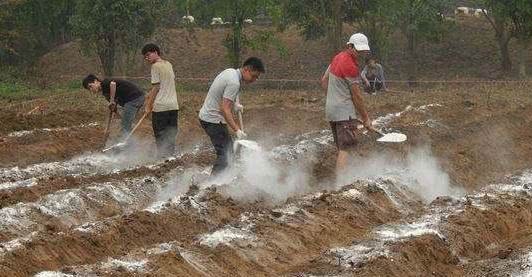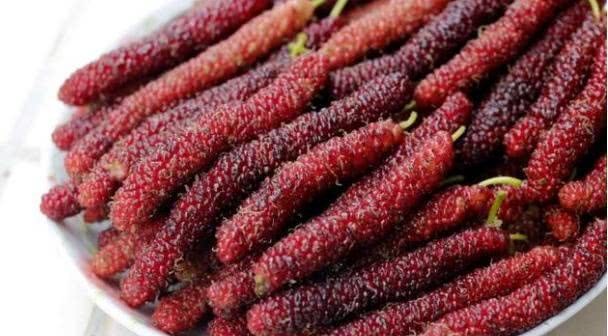How does quicklime disinfect the soil?

Abstract: how does quicklime disinfect the soil?
Continuous cropping in soil without rotation will lead to the continuous accumulation of bacteria and insect pests in the soil, which seriously affects the development of planting, especially in the greenhouse, which is in the micro-environment of high temperature and high humidity for a long time. It is very conducive to the reproduction of germs and insect pests. Therefore, it is particularly important to disinfect the soil. Here is an introduction to lime disinfection.
The benefits of lime to the soil.
Lime reacts with water in the soil to form alkaline substances, which can neutralize the acidity of the soil; the calcium ions formed after the reaction is a good soil binder, which makes the soil aggregates form to loosen the soil and improve the consolidation condition of the soil; lime provides the soil with chemical elements of calcium and magnesium and improves the mineral nutrients of the soil.
The principle of lime disinfection.
Dry lime does not have the effect of sterilization and disinfection. Only lime reacts with water in the soil to form alkaline calcium hydroxide, which is commonly known as hydrated lime. Alkaline environment can denature protein and make it lose its biological activity, so as to achieve the purpose of eliminating bacteria and insect pests.
Specific method of operation.
Choose summer high temperature season or greenhouse leisure season to use this method, remove the remaining previous crops in the field before lime disinfection, lime should not be excessive, it is recommended to use 50MUR 100kg per mu, not more than 150kg, to prevent excessive soil alkalinity, affecting plant rhizome absorption of mineral elements, resulting in poor plant growth.
Dig ridges and trenches, spread 1000 to 2000 kilograms of straw or wheat straw, spread lime on it, bury lime and straw in the ground at a depth of about 30 centimeters, try to make the straw face up, turn deeply and compact, and the ground can be covered with thin film to prevent moisture and temperature from falling. Irrigation under the film should be fully watered, but no stagnant water should be allowed.
The exothermic reaction of lime in the presence of water will cause rice straw or wheat straw to rot and ferment and turn into fertilizer. The high temperature in summer and the heat preservation effect of plastic film can make the lime disinfect the soil more fully, and kill the fungi, bacteria, insect eggs, weed seeds and rhizomes effectively. After disinfection, the film on the ground will be removed, and then the land will be ploughed and turned over after drying, so that it can be planted again.
In the actual production, due to the use of lime is not easy to grasp, less has no effect, more affect the growth of plants, and spread the powder flying, polluting the environment, can be replaced with lime nitrogen to disinfect the soil. Lime nitrogen contains calcium cyanide (disinfection, pest control, disease prevention after decomposition), calcium oxide, namely quicklime, as well as nitrogen, and its nitrogen fertilizer effect can last up to 3 to 4 months. Disinfection method with quicklime.
- Prev

Do you still think flowers are difficult to raise? This kind of flower lives on dirt and blossoms for more than half a year. Lazy people love it.
Speaking of growing flowers, I believe many friends have had the experience of growing flowers. Every time I pass by the door of the flower shop, I always see bright flowers. Finally, I can't resist the temptation to buy two pots and go back. Every time I buy it, I think I must keep it well.
- Next

The long fruit mulberry tastes sweet and the length is longer than the palm.
Abstract: the long fruit mulberry tastes sweet and its length is longer than the palm of the hand. This kind of mulberry is a popular variety in recent years, because the taste is very good, the mature mulberry has no sour taste, high sweetness, and the most attractive.
Related
- Wuhan Hospital Iron Tree Blooming Result Was Instantly Frightened by the Gardener Master
- Which variety of camellia is the most fragrant and best? Which one do you like best?
- What is the small blue coat, the breeding methods and matters needing attention of the succulent plant
- Dormancy time and maintenance management of succulent plants during dormancy
- Minas succulent how to raise, Minas succulent plant pictures
- What are the varieties of winter succulent plants
- How to raise succulent plants in twelve rolls? let's take a look at some experience of breeding twelve rolls.
- Attention should be paid to water control for succulent plants during dormant period (winter and summer)
- Watering experience of twelve rolls of succulent plants
- Techniques for fertilizing succulent plants. An article will let you know how to fertilize succulent plants.

